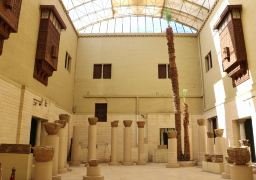The Coptic Museum is located in Old Cairo, housing a complete collection of Coptic art that blends the styles of ancient Egypt, Greece, Rome, Byzantium, and Turkey, much like a chronicle of the evolution of Egyptian civilization
The museum, which exudes a rich sense of history, is a two-story building constructed on the site of the ancient Babylon Fortress, and is itself quite vintage and historically charged

In front of the main building stands a bronze bust of Marcus Smika Pasha, the founder of the museum
The museum boasts 25 exhibition halls, with 9 on the first floor and the rest on the second floor, displaying a variety of artifacts and relics from the early Coptic period, dating from the 4th to the 18th century, including manuscripts, textiles, stone carvings, pottery, frescoes, paintings, icons, ivory sculptures, gold and silverware, wooden artifacts, ironwork, glassware, and various manuscripts
Not-to-be-missed exhibits include linen garments worn by Egyptians in the 6th-7th centuries, featuring Coptic crosses symbolizing the influence of the Byzantine Empire; a Bible written in Coptic, a language created with the pronunciation of ancient Egyptian, originating from the Nubian region during the 10th-11th centuries; and an ancient altar found in Egypt, dating back to the 5th century, adorned with many Coptic crosses and pod-shaped patterns, protected by a tall wooden arch cover added by the Fatimid dynasty
The museum is open all year round from 9:00 to 17:00
Accessibility services include accessible parking, accessible entrances, and accessible restrooms
A must-see tip: Photography is not allowed inside the museum, and devices such as mobile phones and cameras must be left at the counter before entering






